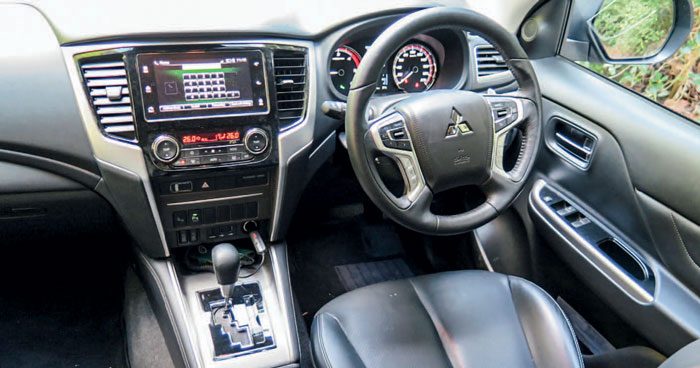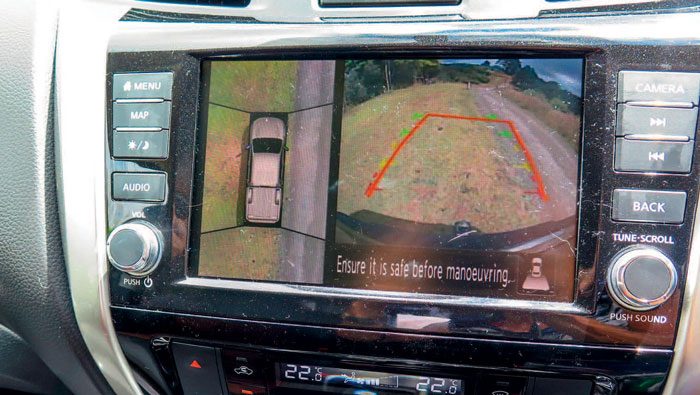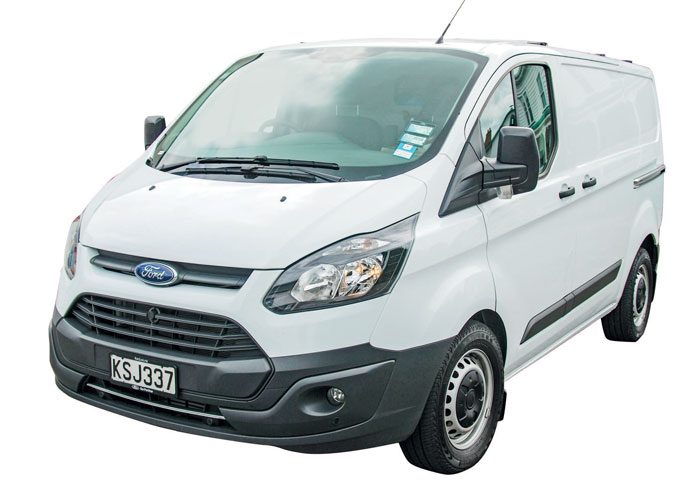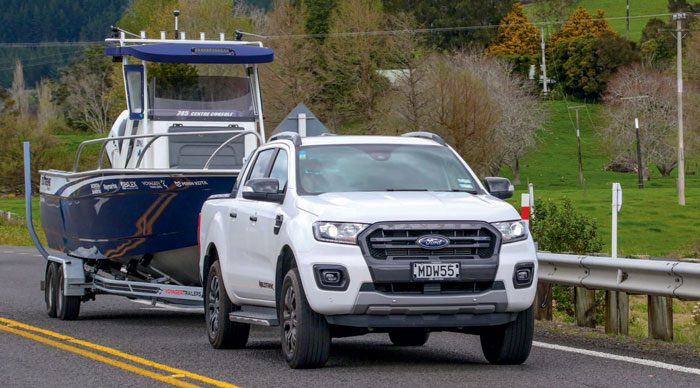As engineers work out newer and better ways to employ a new vehicle‘s battery of sensors, cameras and radar to help a driver manage the environment around them, and road crash statistics prove their worth, the tech is filtering down to light commercials, too. Employers take note – providing the safest environment for your drivers now may just mean ticking a few more option boxes.

Photo: Once this scene would have called for a stripped-out workhorse. Today this Ranger – International Pick-up of the Year 2020 – includes many safety and comfort aids now commonly seen in cars.
Lockdown hasn‘t only caused upheaval to your home and workplace, it has to ours too – not least because test vehicles haven‘t been available. But that turned our focus to the major improvements we‘ve seen in new models we‘ve driven over the past few years. We‘re not talking more power and better fuel economy from smaller engines, but rather considering the relatively rapid introduction of electronic infotainment and safety features also adopted from the manufacturers‘ car lines. With vehicles now considered as much part of the ‘workplace‘ as a loading dock or office thanks to the NZ Health and Safety in Employment Act (1992), all practicable steps must be taken to prevent harm to employees within their work vehicle. Obviously that includes ensuring vehicles are roadworthy, warranted, insured, and loaded and used to their capability – and not beyond. Employers might also require staff to observe the road code, and have standards of expected conduct around speed, fatigue, drink and drugs, seat belts, driving breaks, and more.

Photo: Workhorse it may be, but utes like the Triton feature car-like cabins these days.
Increasingly, fleet buyers also have to consider the role of the vehicle in preventing crashes and reducing their impact, literally and figuratively. If Fred crashes the van and is injured, it‘s possible his employer might be considered partly liable if the crash could have been prevented by vehicle systems available to vans but not fitted to his, or if the severity of his injury might have been reduced had a different van or specification level been fitted. That‘s less scary than it sounds these days, given the variety of electronic safety systems now fitted to vans and utes as standard, while some of the cost options are also worth consideration. And don‘t forget infotainment. It might seem frivolous, but systems that are easy to use and cut distractions (for example by using voice control to change the radio channel rather than a hand dial) also improve safety, while voice control to make and receive calls or text messages while on the move are a boon for busy working folk. They can cut time away from base, given drivers no longer need to stop to make and receive calls, or extend time on the road, as drivers don‘t have to return to learn of new errands.

Photo: Nissan‘s latest Navara features a surround-view screen, to make manoeuvring in tight spaces easier.
Sadly we haven‘t had recent experience with Ford‘s latest Ranger – the first ute to tussle with Hilux for the top spot on New Zealand sales charts, and this year‘s International Pick-up of the Year. But we have driven three of the top five finalists, from Mitsubishi, Nissan and Toyota. Likewise we‘ve driven three of the International Van of the Year finalists (albeit not its winner this year, Fiat‘s Ducato) with Ford‘s Transit, the Renault Master, and Volkswagen Transporter all appearing on these pages. Nowadays ABS brakes, stability control and airbags are a given, and reversing cameras are becoming so. But Mitsubishi‘s Triton, tested last year in VRX 4WD form, got its 5/5 ANCAP crash test rating in part because of its many added safety systems. Not only does it have front and rear parking sensors and a reversing camera, it also features multi-surround view, which gives you a sighting of what‘s close by on every side of the ute. The only shortcomings with these systems are some distortion around the edges and, as with any digital pic, some trouble delivering an across-the-field accuracy of view in areas of strong light and shade. Once driving, the ute will warn you if you leave your lane without indicating – to beat those moments of inattention, or fatigue-induced drift. There‘s blind spot warning to augment the quick glance over your shoulder, and rear cross traffic alert to sound a warning to the reversing driver if something is approaching from the side. Of course Triton is far from alone in fitting such an array, and it is well worth a buyer‘s time to learn about new tech, and scan and compare specifications across likely contenders, as not all price levels include it all, and what you‘ll find most useful will depend on where your staff will drive.

Photo: Updates to the Ford Transit we tested, pictured here, include blind spot warning, and it will slam on the brakes if an impact is imminent.
Items like auto headlights that come on when the car detects low light – as fitted to Nissan‘s 2.3-litre diesel ST-X Navara – will ensure staff aren‘t rendered invisible by that tricky twilight zone. Perhaps fortunately for the business budget, van model cycles arrive far less often than utes or cars. But that can mean van buyers are less aware of the extent of advances available when replacement time rolls around. Even consulting international award winners may not help, given New Zealand doesn‘t import some models or brands. Finalists for the 2020 International Van of the Year award included Fiat‘s Ducato, Iveco‘s Daily, the Renault Master/Nissan NV400, Volkswagen Transporter T6, and both the PHEV plug-in hybrid Ford Transit Custom, and the Transit EcoBlue hybrid.
The PHEV Transit won, with the EcoBlue second, and VW Transporter third. Our recent experience includes the Mercedes Vito and Sprinter, the VW Transporter and Crafter, Peugeot Partner and conventionally fuelled Transit, the Toyota Hiace and Hyundai iLoad, and a few car-based Euro vans including Renault‘s electric Kangoo, fabulous for those last-mile deliveries or as a service vehicle. All included are an increasingly long list of modern tech to improve comfort and, above all, safety. While ABS brakes, airbags and stability control are now standard (the benefits make fitting them a no-brainer), voice control of phones is increasingly common, improving both efficiency and safety. Many of the sensors fitted for some safety systems make others equally possible. Some mainstream vehicles can now show you the speed limit, leaving your drivers no excuse for not knowing what it was. Cargo vehicles can use ABS and ESP sensors and systems to deliver better line stability in cross winds, to adjust if a load shifts, or help steer round corners or reverse trailer sway, while an increasingly wide battery of gradually cheaper radar and camera fitments bring other benefits.

Photo: Today‘s in-vehicle electronics can even help a driver manage trailer sway and crosswinds.
Take the latest update to Ford‘s Transit here in New Zealand. As standard it will alert the driver if they‘re drifting out of their lane (without first indicating), or whether there‘s something in their blind spot, or about to cross from behind when they‘re reversing. A programmable key lets you restrict maximum speed, or make some advance decisions on what is or isn‘t possible for its audio. Like an increasing number of cars, it even will brake for the driver if the Transit detects an imminent impact and no steering or braking input from the driver, who may be glancing at the rear view when a school kid steps out. Yes, it will detect pedestrians, and though of course it can‘t guarantee to stop in time, if your driver is distracted at a vital moment it will certainly ensure any impact is at a much slower speed, reducing the incidence and severity of injuries to people, let alone panel-beating requirements. These days it‘s not enough simply to buy on price, especially if people other than you, the buyer, will use the vehicle for work. Equipment once the province of high-end European cars is now standard, and soon it‘ll be unthinkable to buy a commercial vehicle without blind spot monitoring, or emergency braking. And if any added upfront cost puts you off, just think of the reduction in downtime, not to mention insurance premiums, when this stuff reduces the number and severity of impact incidences among your fleet.





